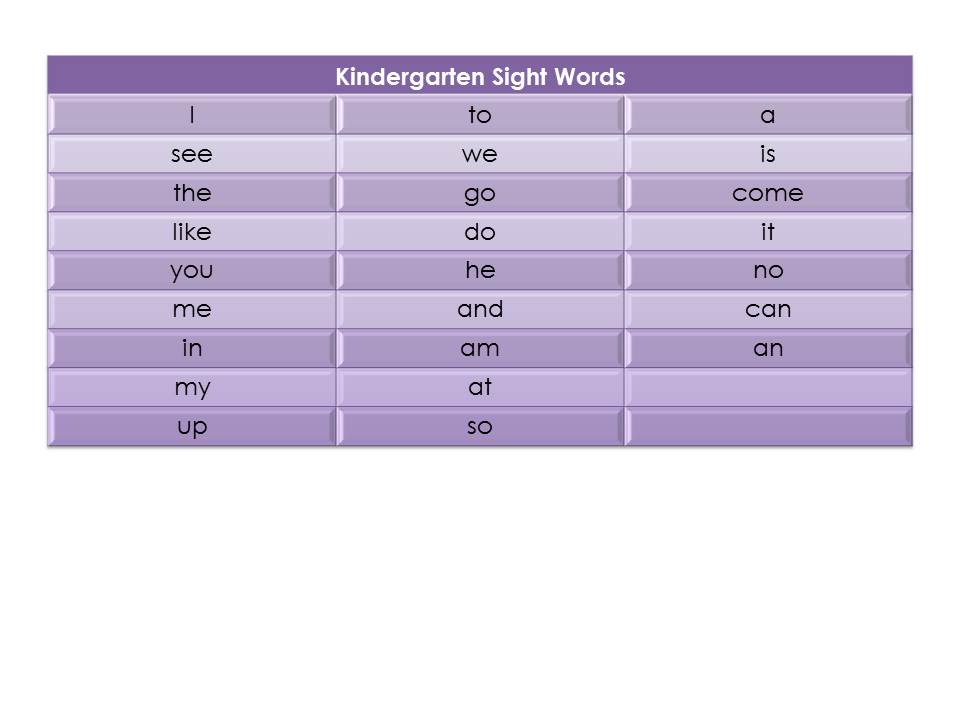

First, we add the sight word card to our word wall and then use our strategies: see it, say it, spell it, write it. The more your kindergarten students become accustomed to a sight word routine, the easier sight word recognition becomes.Įvery time I introduce a sight word, I follow the same structure. Also, have students complete activities to find words on the word wall to give them consistent interaction and engagement. That may seem like a lot, but I promise you, it is easier than you realize.Īdd a new sight word to the word wall as you teach it, making sure they are clear and legible. I challenge you to reference the world wall ten times a day to make it a habit.
SIGHT WORDS FOR KINDERGARTENERS HOW TO
The word wall, alphabet chart, and number line are all resources meant to foster independence in young learners, yet we don't teach students how to use them. Here's the deal if we don't use the word wall, our students won't use the word wall.

Unfortunately, it's also probably the most underutilized resource in the primary classroom. You will most likely find a few resources in every primary classroom in the country, and a word wall is one of them. Reinforce with games, center activities, songs, and poems.See it, say it, spell it, and write it every time you introduce a word.Then, introduce another word and repeat the process. Focus on one target word at a time using all learning strategies. This doesn't mean you can't teach more than one word a week. If your students are required to be an independent level 4 (D) by the end of the year, pull several books from levels A-D and teach the most used words. If you don't have a list provided, look at your readers. Find out how many sight words your school district requires and plug them into your scope and sequence. Each time you introduce a word, it's essential to give students activities where they: Research suggests that a whole-word, visual discrimination approach using the following strategies may be the most effective way to teach sight words. Sight words are important because they make up 75% of the words for early readers. Teachers usually pick the Dolch Sight Word list or the Fry Sight Word list to plug into their scope and sequence. A great way to memorize them is with a sight words list. Starting in kindergarten, students must learn sight words as part of their balanced reading instruction. Sight words are common words that do not follow spelling rules (standard phonetic patterns) or decoding, so children must memorize them.


 0 kommentar(er)
0 kommentar(er)
